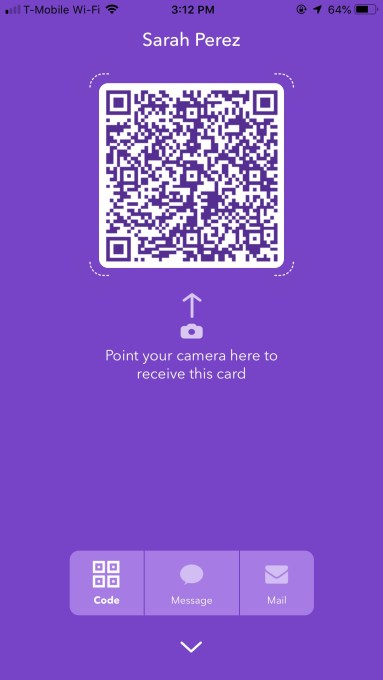Kyle Wood is senior counsel in Perkins Coie’s Blockchain Technology & Digital Currency industry group in the Dallas office.
Taylor Lindman
Contributor
Taylor Lindman is an associate in Perkins Coie’s New York office focusing on fintech, distributed ledger technology, payments and finance matters.
In recent months, the CryptoKitties fad that had users buying and selling tens of thousands of dollars of blockchain-based collectable cats has settled down considerably. That is not to say that CryptoKitties hasn’t spawned numerous copycats (see CryptoPuppies, CryptoCountries and many more). Unfortunately, the immense popularity of CryptoKitties is unlikely to be repeated, at least not by clones hoping to cash in on the novelty of blockchain-based crypto collectables.
The legacy of CryptoKitties is still in development, but most can agree that the project raised awareness (and attracted development talent) to new uses for blockchain tokens. In particular, CryptoKitties introduced many to the concept of non-fungible tokens, or “NFTs,” which might impact more than the world of cryptocurrencies.
NFTs are unique blockchain tokens that can be transferred to other people, similar to cryptocurrencies (e.g. Bitcoin and Ethereum), but they ordinarily cannot be replaced by another token of equal value — this is because each NFT has its own unique token identifier (and often, associated reference metadata).
Today, most NFTs are used in blockchain-based collectible games; however, use cases of NFTs are only just beginning to be explored. This article briefly discusses the origin of NFTs, explores several flavors of NFTs in the blockchain ecosystem and highlights some potential legal hurdles facing NFT developers.
Collectible origins
The physical collectible trade emerged in the 1860s with the first baseball trading cards. Since that time, physical collectibles have dominated the collectible market. Ownership of physical collectibles is straightforward: When a collector buys a physical collectible, the collector has complete ownership and can sell or trade the collectible at will. Collectors are only prevented from infringing on a collectible’s underlying intellectual property rights. Thus, collectors can buy, sell or trade, but not copy, physical collectibles.
In the late 1990s and early 2000s, in-game collectibles, or virtual assets, emerged. Virtual assets are those goods only found in virtual worlds. Like physical collectibles, there is a robust market for virtual assets. Unlike physical collectibles, however, gamers who find virtual assets in the virtual world do not own them: Large game developers and publishers often license virtual assets to gamers through contractual terms. Thus, the exchange of virtual assets is cabined to authorized in-game trading or illegal trading via auction sites like G2G.
With the emergence of the ERC-721 token standard, new digital collectibles (like CryptoKitties) or tokenized goods, have changed collectible ownership discussions. Specifically, NFTs are revolutionizing digital asset ownership. NFTs allow for the complete ownership of tokenized goods: Collectors own their tokenized goods in perpetuity and can buy, sell and trade their tokenized goods at will. Thus, tokenized goods are a unique hybrid between physical collectibles and virtual assets, in that they offer complete ownership of digital wares. Even though in practice NFT owners have property rights in their tokenized goods, it is unclear if an owner’s property rights are recognized under U.S. property law.
Evolution: ERC-721 and exotic tokens
ERC-721
The first and most prevalent NFT is the ERC-721 standard, primarily due to the success of CryptoKitties. Developers are experimenting with ERC-721 for everything from digital collectibles to securitized investment products. The development of ERC-721 token-based collectible games and the subsequent explosion of speculative interest by investors has put a spotlight on several important legal issues, including issues related to ownership, privacy and money transmission.
In games like CryptoKitties, ownership of the token is clear-cut because each CryptoKitty is a newly developed piece of intellectual property. However, if larger game developers and publishers adopt NFTs, we could quickly revert to the well-worn path of virtual goods, where the token holder is deemed a licensee instead of an owner and is therefore unable to transfer or sell the virtual good to others off platform.
ERC-721 token-based games often play with the “tokenMetadata” function to create various permutations and combinations of characteristics (e.g. breeding in CryptoKitties). Depending on the application, this reference data may be stored in a centralized database or cache folder outside the control of the token owner, which may result in disputes over ownership, particularly when the intellectual property rights for the reference data and the token belong to separate owners.
NFTs can include functionality that may subject NFT businesses to FinCen registration because the same wallet that accepts NFTs can also accept ERC-20 fungible tokens. NFT businesses need to pay special attention to how they structure their tokens and the functionality of wallets that hold them.
Additionally, a tokenized asset exchange may qualify as an investment contract and thus a security. For example, suppose an application developer developed a tokenized asset, like a unique digital weapon, before the application or game in which the tokenized asset could be used has been developed. The application developer then decides to sell the tokenized asset for money to raise profits for the development of the application itself. This transaction may be deemed an investment contract and therefore an unregistered security.
ERC-721 collectable tokens currently dominate the NFT landscape, but we expect this trend to shift as new and more robust use cases come to the forefront. The development of other exotic token standards may also eat into ERC-721 market share; however, a diverse offering of NFT standards should help bolster the NFT ecosystem.
Exotic tokens
More exotic token standards, such as ERC-420 and ERC-998, offer insights into the potential of NFTs and quasi-NFTs. Tokens compliant with these exotic token standards will have unique functions that make them well suited for a variety of use cases. For example, in games, ERC-998-compliant tokens could represent characters that carry consumable rations (ERC-20 tokens) and non-fungible weapons (ERC-721 tokens) or, in commerce, classes of these tokens could be used for tiered membership programs or in the creation of markets in securities products.
While perhaps not the most politically correct use of NFTs, “Rare Pepes,” or rare digital art based on Pepe the Frog, allows users to create, trade and sell their artwork for “Pepecash.” Rare Pepes utilize ERC-420-compliant tokens (the “dank standard”), which demonstrates how NFTs can be used to establish limited editions of digital artwork. This type of quasi-NFT could also be used to offer multiple series of limited-subscriber investment products.
Exotic tokens are just emerging, and we expect to see additional standards and use cases come to market frequently over the coming years.
Conclusion
From the humble origins of the baseball card, NFTs, which offer many of the same features of physical collectibles and virtual assets, are the next evolutionary leap of this industry. NFTs also have many potential use cases outside the world of digital collectibles in everything from artwork to securitized investment vehicles. Although they are still in their very early days, we expect NFT’s to have a bright future.




 The idea for the app comes from
The idea for the app comes from 

